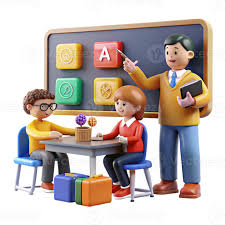In today’s evolving educational landscape, teachers are increasingly incorporating multimedia resources to engage young minds and reinforce learning concepts. Among these resources, kids animated shows have emerged as powerful tools that bridge entertainment and education, offering colorful characters and storylines that captivate children’s attention while simultaneously delivering valuable lessons. The strategic use of animated content in classrooms represents a recognition of changing learning styles and the need to adapt teaching methodologies to connect with digital-native students.
Innovative educators recognize that when thoughtfully selected and implemented, animated programs can reinforce curriculum objectives in ways traditional teaching methods might not. Teachers who integrate kids animated shows into their lesson plans often report higher student engagement, improved retention of information, and increased classroom participation. This symbiotic relationship between education professionals and quality animated content creates a dynamic learning environment where children associate knowledge acquisition with positive experiences.
The effectiveness of animated shows as educational tools stems from their multi-sensory approach. Visual stimulation through vibrant animation, auditory engagement through dialogue and music, and emotional connection through compelling storytelling all combine to create memorable learning experiences. Children who might struggle with traditional textbook learning often find animated explanations of complex concepts more accessible and easier to internalize.
Research in educational psychology supports this integration, suggesting that when information is presented in multiple formats, retention and understanding improve significantly. Teachers who leverage this knowledge are essentially tapping into the way children naturally learn - through play, storytelling, and emotional engagement rather than rote memorization alone.
Furthermore, quality animated content often introduces children to diverse perspectives and cultures. Shows that feature characters from different backgrounds help foster inclusivity and global awareness from an early age. This cultural exposure is particularly valuable in increasingly diverse classrooms where teachers strive to create inclusive learning environments that respect and celebrate differences.
The adaptability of animated shows to various subject areas makes them versatile teaching aids. From mathematics and science to literature and social studies, there exist animated programs designed to complement virtually every area of elementary education. Teachers can select content that aligns with specific curriculum objectives, using episodes or clips to introduce concepts, reinforce learning, or provide alternative explanations for difficult topics.
Critical thinking skills are another area where animated shows prove valuable. Many modern educational animations include problem-solving scenarios that encourage children to think analytically and consider multiple approaches to challenges. By pausing at strategic moments and asking students to predict outcomes or suggest solutions, teachers transform passive viewing into active learning experiences.
The pandemic era highlighted the importance of engaging digital content when in-person instruction wasn’t possible. Teachers who had already incorporated animated educational content into their repertoire found the transition to remote learning somewhat smoother, as they could direct students to quality animated resources that supported continued learning outside the classroom environment.
For teachers working with special needs students, animated shows often provide accessible entry points to learning. The visual nature of animation, combined with clear dialogue and repetitive structures, can help children with various learning differences grasp concepts that might be challenging when presented through traditional methods. This inclusivity benefits not only the students with identified learning needs but enriches the classroom experience for everyone.
The production quality of educational animated content has improved dramatically in recent years, with many shows employing educational consultants to ensure accuracy and age-appropriateness. This commitment to quality means teachers can confidently incorporate these resources knowing they align with educational standards and developmental appropriateness.
While skeptics might question screen time in educational settings, research suggests that guided viewing with specific learning objectives and follow-up activities transforms what might otherwise be passive entertainment into valuable educational experiences. The key lies in how teachers frame, integrate, and expand upon the animated content, using it as a launching point rather than a replacement for other teaching methodologies.
Professional development for educators increasingly includes guidance on effective integration of multimedia resources, including animated content. Forward-thinking school districts recognize that preparing teachers to thoughtfully incorporate these resources represents an investment in student engagement and achievement.
As technology continues to evolve, the partnership between educators and quality animated content will likely strengthen, with more customized and interactive options becoming available. The teachers who embrace these tools while maintaining focus on clear learning objectives position their students for success in a world where digital literacy and traditional academic knowledge are equally valuable.

